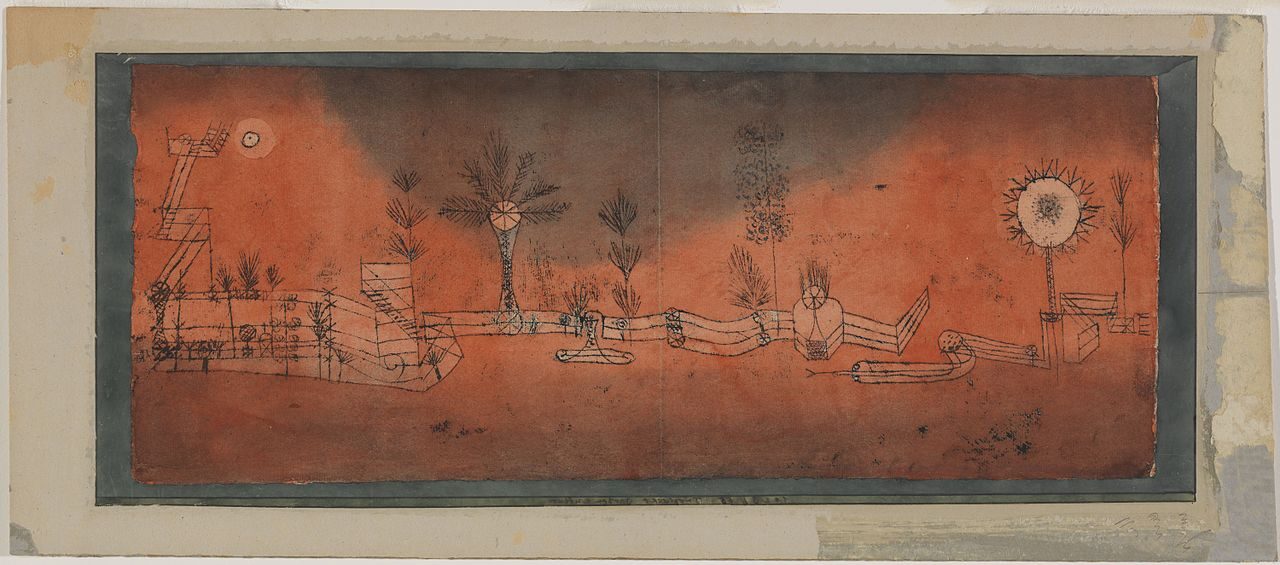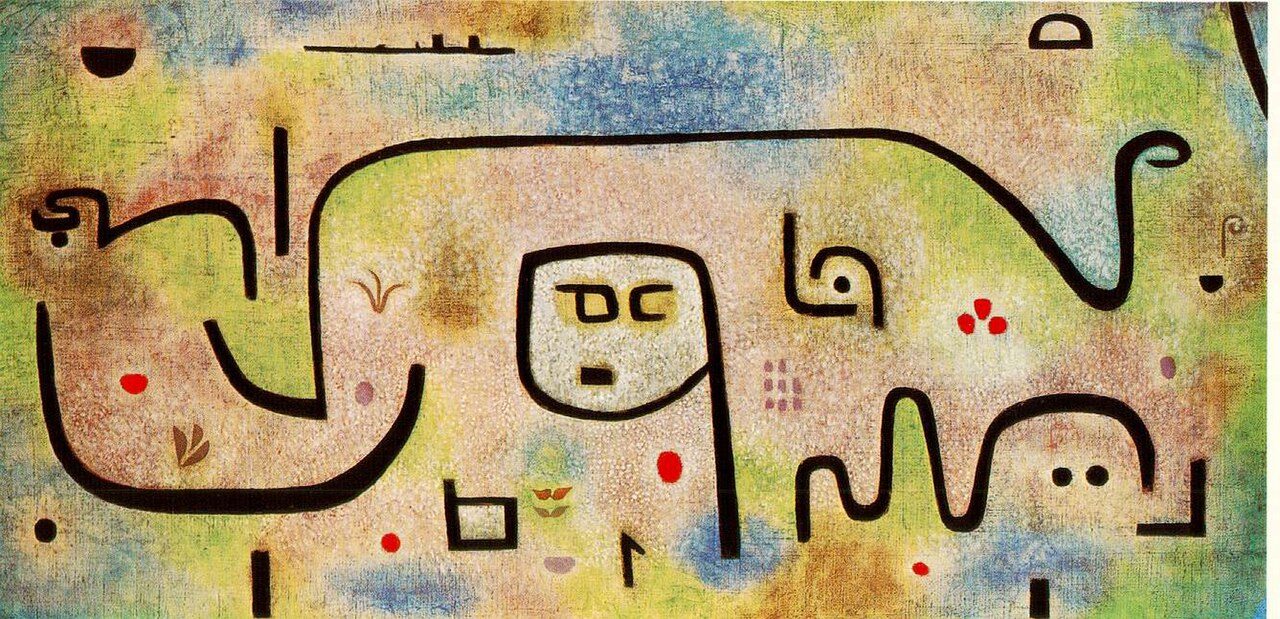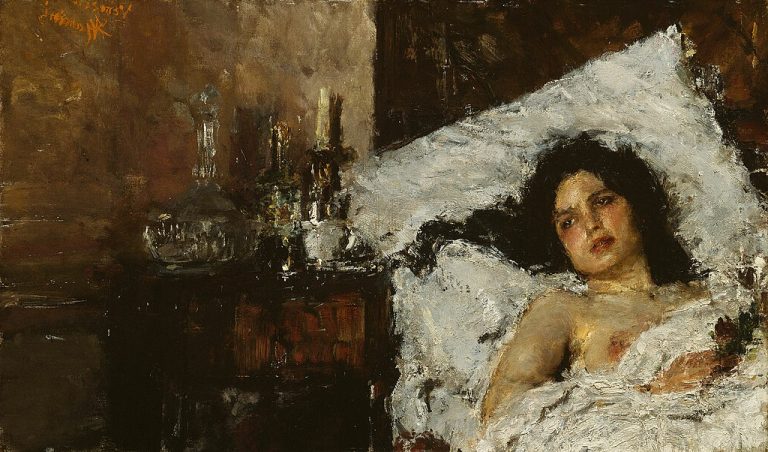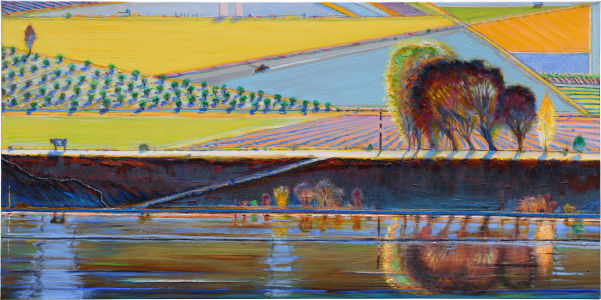Paul Klee Painter: Exploring the Visionary Modernist’s Artistic Legacy
Born: 18 December 1879, Bern, Switzerland
Death: 29 June 1940, Ticino, Switzerland
Art Movement: Expressionism, Bauhaus, Surrealism
Nationality: German
Teachers: Heinrich Knirr and Franz von Stuck
Institution: Academy of Fine Arts
Paul Klee Painter: Exploring the Visionary Modernist’s Artistic Legacy
Paul Klee’s Life and Career
Paul Klee‘s journey as an artist spans several decades and countries. His innovative approach to color theory and form was significantly shaped by his life experiences.
Early Life and Education
Paul Klee was born on December 18, 1879, in Munchenbuchsee, Switzerland, to a German father and Swiss mother. This dual heritage would later influence his artistic identity.
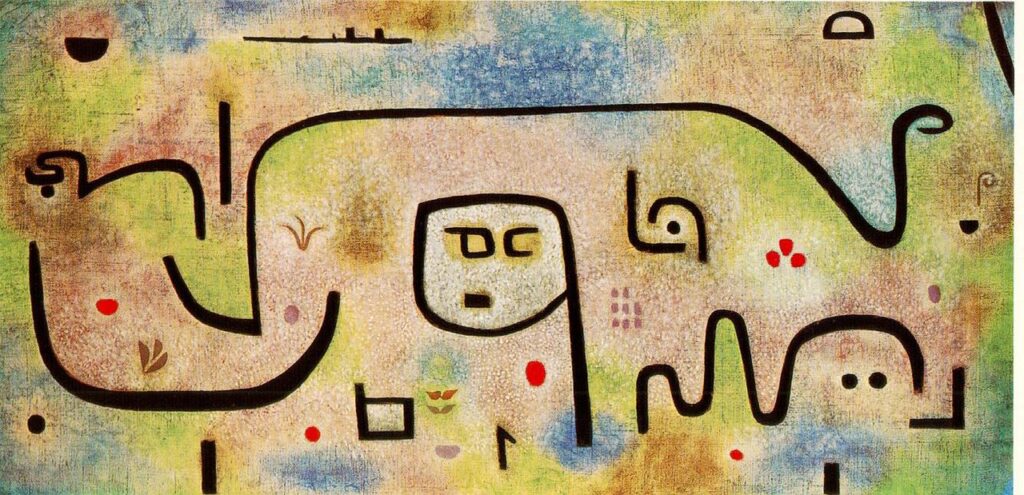
Insula Dulcamara, 1938 by Paul Klee
As a child, Klee showed remarkable talent in both music and art. Though initially drawn to music, he ultimately chose to pursue visual arts.
In 1898, Klee began his formal art education at the Munich Academy. His early works demonstrated skilled draftsmanship, but he struggled to find his unique artistic voice.
During his time in Munich, Klee encountered the works of various avant-garde movements that would later influence his style. He graduated from the academy in 1901 but felt dissatisfied with the traditional training he received.
The Bauhaus Years
In 1921, Walter Gropius invited Klee to join the faculty at the Bauhaus in Weimar, Germany. This marked a significant turning point in his career.
At the Bauhaus, Klee taught various courses including bookbinding, stained glass, and painting. His teaching methods were as innovative as his artwork, emphasizing the fundamental elements of line, shape, and color.
When the Bauhaus moved to Dessau in 1926, Klee relocated with the school. His time at this influential institution allowed him to refine his theories on color and form.
Klee remained at the Bauhaus until 1931, producing some of his most significant works during this period. His lectures were compiled into the “Pedagogical Sketchbook,” which became an influential text on modern art theory.
Influence of Travel and War
Klee’s 1914 trip to Tunisia profoundly transformed his artistic vision. The North African light and colors inspired him to declare, “Color and I are one. I am a painter.”

Blue Bird Pumpkin, 1939 by Paul Klee
World War I disrupted Klee’s life, though he served in a non-combat role in Germany. The war’s horrors influenced his work, which began to incorporate more symbolism and abstraction.
In 1933, when the Nazi regime deemed his work “degenerate,” Klee returned to his native Switzerland, settling in Bern. This period saw a shift in his style, with darker themes reflecting the political climate.
Despite developing scleroderma in his final years, Klee’s productivity increased remarkably. He created nearly 500 works in 1939 alone. Paul Klee died on June 29, 1940, leaving behind over 9,000 works that continue to influence artists worldwide.
Artistic Style and Methods
Paul Klee developed a unique artistic approach that combined technical precision with childlike wonder. His work transcended conventional categories, drawing from expressionism, cubism, and surrealism while maintaining a distinctive personal vision.
Innovations in Color and Composition
Klee’s mastery of color represented one of his most significant contributions to modern art. He often selected colors based on his emotional state, shifting between bright, optimistic palettes and more subdued tones during pessimistic periods.
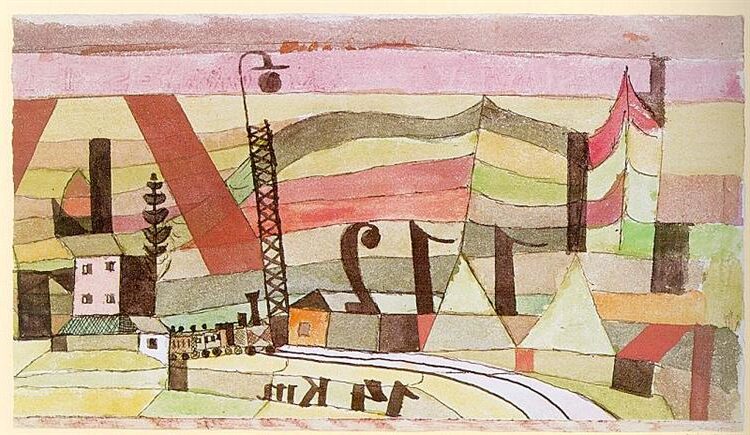
Station L 112, 1923 by Paul Klee
His technical approach involved layering thin washes of watercolor and oil to create luminous effects. This technique produced works with remarkable depth despite their often small scale.
Klee developed a unique compositional system based on geometric divisions of the canvas. He carefully organized pictorial elements through a mathematical approach while maintaining visual spontaneity.
His works frequently featured delicate lines against colored backgrounds, creating visual rhythms that appeared both precise and playful. This balance between structure and intuition became a hallmark of his style.
Intersection with Music
Music profoundly influenced Klee’s artistic development. As an accomplished violinist, he transferred musical concepts directly into his visual compositions.
Klee developed a system of visual “polyphony” where multiple pictorial elements functioned like musical voices in a composition. His paintings often featured repeating motifs that created visual rhythms similar to musical patterns.
He described some of his works as “color harmonies,” explicitly drawing parallels between color relationships and musical intervals. This approach helped him create paintings with an almost musical sense of balance and proportion.
Many of his titles referenced musical terms, reinforcing the connection between his visual art and musical structures. This cross-disciplinary thinking positioned him as one of the most innovative painters of the early 20th century.
Transition to Abstraction
Klee’s journey toward abstraction evolved gradually throughout his career. His early satirical drawings and caricatures demonstrated his drafting skills before he moved toward more abstract expression.

Love Song by the New Moon, 1939 by Paul Klee
After joining the Bauhaus in 1921, Klee’s work increasingly embraced geometric abstraction. He reduced forms to their essential elements while maintaining references to recognizable objects and figures.
His abstract works often contained coded symbolism and personal mythology. These elements gave his paintings multiple layers of meaning beyond pure formal abstraction.
Unlike other abstract painters of his era, Klee never completely abandoned representation. Instead, he created a unique visual language that existed between abstraction and figuration—a space where shapes might simultaneously suggest natural forms and pure geometry.
Legacy and Recognition
Paul Klee’s influence extends far beyond his lifetime, shaping modern art movements and inspiring generations of artists. His unique approach to color, form, and composition continues to resonate in contemporary art circles.
Impact on Modern Art
Klee’s innovative techniques and philosophical approach to art created a lasting legacy in the world of modern art. His work bridged multiple movements including Expressionism, Cubism, and Abstraction, influencing artists across various disciplines.
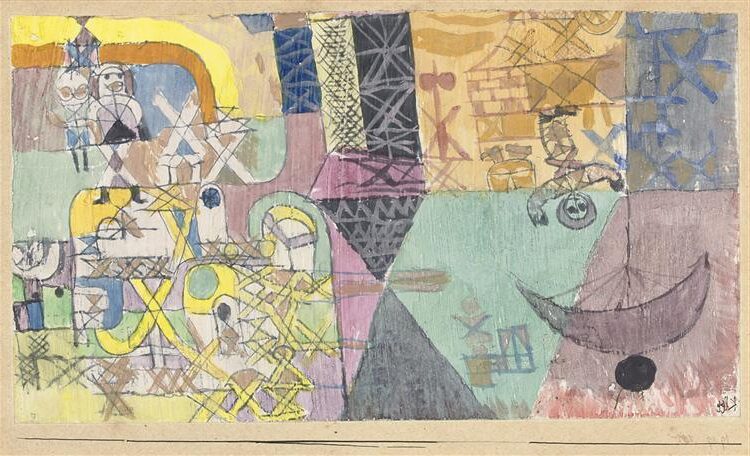
Asian Entertainers (Asiatische Gaukler), 1919 by Paul Klee
Klee’s teachings at the Bauhaus school spread his artistic theories to countless students who later became influential artists themselves. His famous statement that “art does not reproduce the visible but makes visible” became a foundational concept for abstract art.
Many contemporary artists cite Klee’s experimental approach to color theory and his ability to blend music, poetry, and visual art as major influences on their work. His childlike yet sophisticated style encouraged artists to explore the connection between the conscious and unconscious mind.
Confrontation with Nazis
In 1933, Klee’s career faced a devastating setback when the Nazi regime labeled his work as “degenerate art.” This classification was applied to modern art that Nazi officials considered un-German or harmful to German culture.
The Nazis removed 102 of Klee’s works from German museums, with several pieces later displayed in the infamous “Degenerate Art” exhibition of 1937. This exhibition was designed to mock and condemn modern art movements.
Following this persecution, Klee fled to Switzerland in late 1933. The experience profoundly affected his later work, which often contained coded political messages and symbols of resistance against totalitarianism.
Posthumous Exhibitions and Collections
After his death in 1940, Klee’s reputation continued to grow through major retrospective exhibitions. The Museum of Modern Art in New York held a significant retrospective in 1941, cementing his international importance.

Seventeen (Siebzehn), 1923 by Paul Klee
The Zentrum Paul Klee in Bern, Switzerland, opened in 2005, houses over 4,000 of his works—approximately 40% of his total output. This dedicated museum showcases the breadth and evolution of his artistic career.
Major collections of Klee’s work can also be found in the Kunstmuseum Bern, the Metropolitan Museum of Art, and the Tate Modern. These institutions regularly organize exhibitions that introduce new generations to his innovative approach.
Frequently Asked Questions
Paul Klee’s artistic journey sparked curiosity about his techniques, influences, and contributions to modern art. His distinctive style and theoretical approach to color and form continue to fascinate art enthusiasts worldwide.
What influences shaped Paul Klee’s painting style?
Paul Klee drew inspiration from multiple sources throughout his artistic career. Early exposure to music played a crucial role, as he initially considered becoming a musician before choosing painting.
The artistic movements of Expressionism and Cubism significantly impacted his work. During his travels to Tunisia in 1914, Klee discovered a profound connection to color that transformed his artistic approach.
His teaching position at the Bauhaus school exposed him to constructivist principles and abstract design theories. Natural forms, children’s art, and primitive designs also influenced his unique visual language.
How did Paul Klee contribute to modern art movements?
Klee bridged several major art movements, becoming a key figure in Expressionism, Cubism, and Surrealism. His teaching at the Bauhaus school helped establish foundational principles of modern design and color theory.
His innovative approach to line, color, and form challenged conventional artistic boundaries. Klee’s work demonstrated that abstraction could convey deep emotional and spiritual content.
His meticulous documentation of his artistic process, cataloging his works systematically, provided valuable insights for future artists and scholars. His theoretical writings, especially on color theory, continue to influence contemporary art education.
What techniques did Paul Klee use in his artwork?
Klee developed unique techniques that combined drawing, painting, and printmaking. He often started with abstract grids or patterns, building complex compositions through layering and texture.
His “oil transfer” method involved drawing on one sheet of paper placed over another coated with oil paint or ink. This created distinctive line qualities and unexpected textures in his work.
Klee frequently used watercolor on unusual surfaces like burlap, newspaper, or cardboard. He experimented with color theory, creating transparent layers that interact to produce subtle, luminous effects.
Can you describe the evolution of Paul Klee’s artistic career?
Klee began as a skilled draftsman, creating primarily black and white etchings before 1914. His transformative trip to Tunisia marked a shift toward vibrant color experimentation and more abstract compositions.
During his Bauhaus years (1921-1931), Klee refined his theoretical approach and created works with geometric precision. When Hitler rose to power, Klee was forced to leave Germany, returning to Switzerland in 1933.
The final years of his career, despite declining health, produced some of his most powerful works. His late paintings became more simplified yet emotionally intense, often reflecting his experience with illness and political turmoil.
What are some of the most celebrated works by Paul Klee?
“Ad Parnassum” (1932) stands as one of Klee’s masterpieces, featuring a pointillist technique and architectural composition. “The Twittering Machine” (1922) showcases his whimsical approach to mechanical forms and sound representation.
“Fish Magic” (1925) demonstrates Klee’s dreamlike underwater world with mysterious symbols and creatures. “Ancient Sound, Abstract on Black” (1925) uses colorful squares to create a musical-visual experience.
“Cat and Bird” (1928) represents Klee’s ability to capture psychological tension through simplified forms. These works highlight his versatility and innovative approach to visual storytelling.
How does Paul Klee’s work reflect his theoretical views on color and form?
Klee believed color possessed spiritual qualities. He thought color could express emotional and metaphysical ideas. His paintings often feature complex color relationships. These relationships create rhythm and movement across the composition.
His famous quote, “taking a line for a walk,” reflected his philosophy. In his philosophy, lines have their own life and energy. Klee viewed form as dynamic rather than static. He often used arrows, paths, and directional elements.
Klee’s theoretical writings emphasized the importance of intuition. He also emphasized the importance of analytical thinking. His method of building compositions from basic elements reflected his belief. He believed that art should reveal the processes of natural growth and formation.

